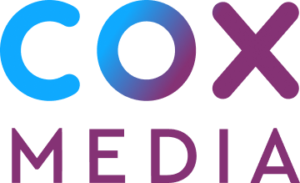Higher Education Advertising: More Strategies to Boost Enrollment and ROI
Increased competition for incoming students is costing a pretty penny for higher education institutions: a 2019 survey found that colleges and universities spent an average of $429-623 per newly enrolled student on advertising and marketing campaigns.
When you consider that the average cost of attending college in the United States is more than $35,000 per student, per year, the cost of advertising to convert those students doesn’t seem so extravagant. But as higher education institutions shell out millions of dollars to increase enrollment and win over top student applicants, the need for cost-effective and results-driven advertising strategies is paramount for these organizations.
Recently, we identified a number of advertising strategies that can help higher education institutions build brand awareness, target ads to relevant audiences, and win tough battles with rival institutions over sought-after student enrollees. With student enrollment season underway, we’re here to offer additional tips and tricks to refine your advertising strategy and deliver better ROI— both during this enrollment cycle, and for enrollment classes to come.
Read on for guidance on how to take your ad strategy to the next level.
Target Students by Their Top Motivations
Prospective college students are not a monolithic group. Those students make college decisions based on many different factors, ranging from their intended major and the cost of tuition to the surrounding community where the institution is located.
When institutions take the time to understand these motivations, it can improve advertising outcomes by enabling ad messaging tailored to individual users. Prospective student surveys and past ad engagements can offer crucial insights to improve engagement with individual prospects: if an individual is particularly engaged with ads and other content related to financial aid, for example, that individual may be best targeted through messaging and content focused on addressing their financial concerns and needs.
Digital ad campaigns can segment students into different groups according to these motivations, enabling precise messaging that maximizes ad relevance.
Use Automated Tools to Optimize Engagement and Responsiveness
A fast response delivers a better brand experience in any industry—and higher education is no exception. Your institution’s advertising strategy will inevitably deliver better results when it utilizes automation tools to streamline interactions, minimize wait times, and better serve prospective students in their moment of need.
These automated tools can include retargeted ads based on past user interactions, as well as chatbots and triggered email engagements based on actions or inquiries made by students. Building these automated elements into your ad strategy also reduces the human labor involved in delivering this brand experience, which becomes even more valuable as you scale your ad campaign.
Test New SEO Keywords to Reach a Niche Audience
Most higher education institutions are already using SEO to meet prospective students in their online college search. But if you’ve been largely reliant on the same SEO keywords for several years, it might be time to test new approaches—especially with regards to long-tail keywords that can help you reach a more targeted audience.
While these niche keywords offer less volume, they could be more cost-effective than some of the higher-volume keywords being bid on by many different institutions. For campaigns targeting underserved student populations—or in cases where your institution is trying to increase enrollment for a particular college or major—these niche keywords can be a useful tool to invest advertising into specific areas of need.
Create Video Tours and Other Short-Form Videos
College campus visits may be falling out of favor with some students: more than one-third of higher ed institutions reported a decline in campus visits in 2020. While some of that decline was likely influenced by the pandemic, virtual options for touring campuses and experiencing campus life continue to gain popularity either as an alternative to campus visits, or to supplement an in-person experience.
These virtual tours and other short-form videos can be powerful assets in your advertising strategy, diversifying student options for researching the college experience your institution offers. You can also bring students behind the scenes and/or into the classroom to offer a more intimate view of what they can expect from their college experience.
As you build a full-funnel advertising strategy to engage prospective students at all phases of their decision-making journey, a digital advertising partner can help you coordinate those campaigns and channels to maximize engagement and ROI. With extensive experience in developing and managing higher education ad campaigns, Cox Media’s experts can help your institution create a tailored strategy that fits your budget and serves your advertising goals.
Connect with a Marketing Expert
Share Post On Social
Related Insights
Connect With Your Local Marketing Expert
You know your business. We know advertising. Together, we can bring your business to more people. Contact a member of our team today. We’d love to help you grow.


